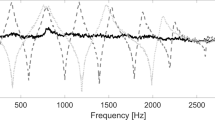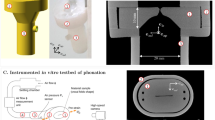Abstract
PROF. SCRIPTURE'S arguments on this subject which appeared in NATURE for January 13 and 20 last seem to me to be open to criticism. It is true, no doubt, that a strongly damped resonator may be excited by periodic impulses even when its free period is not an exact submultiple of the period of the impulses. But it does not appear justifiable to argue from this that the vibration so excited is inharmonic to the fundamental period. As an illustration of the error in the argument, we may consider the somewhat analogous case of the vibrations of the resonator of a violin. The bridge, belly, and enclosed air of this instrument form a resonating system having a series of free modes of vibration, which, especially those of higher pitch, are strongly damped by reason of the communication of energy to the external atmosphere and otherwise. These free periods are, in general, inharmonic to the fundamental period of the string. It is easily shown from the known mode of action of the bow that the force exerted by the vibrating string on the bridge changes impulsively from a positive to a negative value once in each period. If Prof. Scripture's argument were valid, we should be entitled to argue that the response of the bridge and belly to these discontinuous changes of force should be inharmonic to the fundamental period of the string. Actually, however, we know that this is not the case. The overtones which fall near the free periods of the resonator are, no doubt, strongly reinforced, but the motion of every part of the violin continues to be in strictly harmonic relation to the period of the forces impressed by the bow.
This is a preview of subscription content, access via your institution
Access options
Subscribe to this journal
Receive 51 print issues and online access
$199.00 per year
only $3.90 per issue
Buy this article
- Purchase on Springer Link
- Instant access to full article PDF
Prices may be subject to local taxes which are calculated during checkout
Similar content being viewed by others
Author information
Authors and Affiliations
Rights and permissions
About this article
Cite this article
RAMAN, C. The Nature of Vowel Sounds. Nature 107, 332–333 (1921). https://doi.org/10.1038/107332b0
Issue Date:
DOI: https://doi.org/10.1038/107332b0
Comments
By submitting a comment you agree to abide by our Terms and Community Guidelines. If you find something abusive or that does not comply with our terms or guidelines please flag it as inappropriate.



